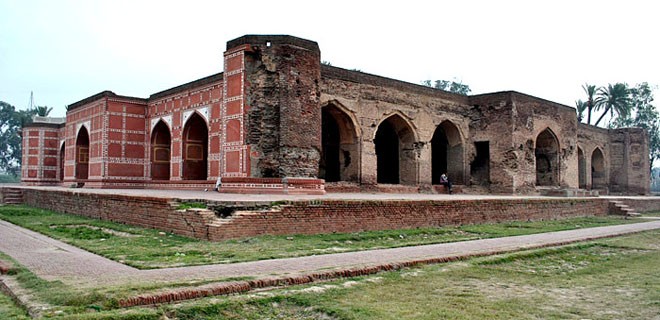

The Mausoleum of Nur Jahan (real name Mehrunnisa Begum), constructed for the beautiful 15th-century Mughal Empress as her final abode, remains one of Lahore’s best known historical sites. Only, it has fallen into neglect and misuse.
An architectural marvel in its own right, the Mausoleum which is situated in Shahdara, just across the River Ravi, was built with decorative tiles, marble and red stones.Empress Nur Jahan is said to have seen it through its construction in her lifetime but the vaulted hallway’s marble coverings, wrought with mosaic flowers, were removed by the Sikh monarch Ranjit Singh in the 19th century.
The Mausoleum, measures 134 sq metres, is a single-storey structure and houses two graves. The height of its tomb is 19 feet and 4 inches. Its outer wall is covered in red sandstones with floral motifs in addition to white, black and yellow marbles.
Pakistan is blessed with architectural sites of great heritage value. But progressively we are losing them to modern structures. Or, we do not take good care of these places.
Presently, the Mausoleum walls are variously chalked with random notes by people. At every turn, you find crumbling structures and fading frescos. The ceiling is festooned in a high plaster respite of interlacing patterns, but much of it has fallen off.
The Mausoleum, which is owned and maintained by the Federal Department of Archaeology and Museums, once lay in ruins. A 2001 report suggests restoration work was started but it could not return the place to its original glory.